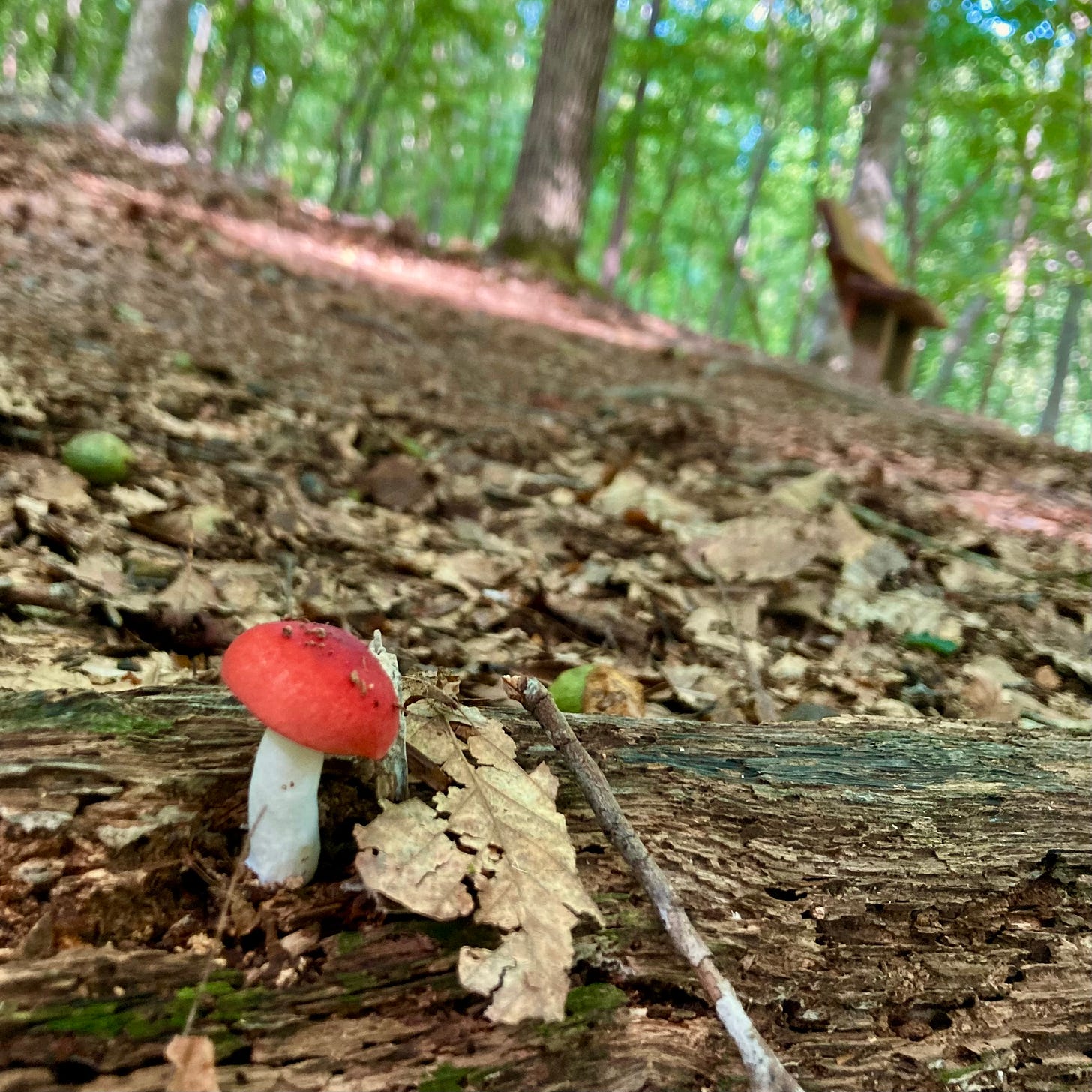After Monoflora
Writing in the microseasons
Dear One,
The microseasons have taught me that emergence happens in its own time. In the smallest seasons, there are rhythms we can sense, but do not control.
This summer of writing has shown me that I can collaborate with these rhythms in creative ways of being present—even in the dailiness of it all. As I adopted the practice of taking pages to edit along with me on my hikes, I gave each chapter “the forest test” by reading them from a spot looking down on New Hope Creek. I sort of let Monoflora become a parallel world I lived in, and I loved the escape of it. This world showed me things that I had forgotten—or maybe never claimed for myself. And I’m still peeling back the layers that subconsciously appeared in each chapter.
I thought I had written Olli and Annu's transformation intuitively, following the story's own logic. But nature had been teaching me the science all along. I hope I’ve started understanding something about willingness that goes deeper than just letting words appear on the page. I’m beginning to sense that stories carry intelligence of their own. They use us as much as we write them—the way ghost flowers use their fungal partners and tree hosts to create something that couldn't exist alone.
Reading more poetry this summer helped me recognize this collaborative growth. Mary Oliver wrote about letting the soft animal of the body love what it loves. But what happens when we let the soft animal of the story love what it loves? What forms does it take when we stop trying to control the narrative?
I also started carrying lines of poetry on my forest walks like Annu carried her healing herbs—as medicine for the creative process itself. I carried Jane Hirshfield and Adrienne Rich. I read Alane Rollings’ incredible Struggle to Adore. And I read as much poetry as I could here on Substack—true sustenance if words could ever be!
These became companions as I worked, reminding me that the deepest stories always emerge from a combination of precision and surrender. Monoflora taught me that we become ancestors to our stories. Every tale we tend becomes part of the underground network that will nourish future stories.
After a good long break, I’m starting a new project. The botanical folklore series I'm developing now feels like tending a grove where each story stands apart, yet supports the others through invisible connections. These are short tales almost like bedtime stories, and they’re bringing me so much joy in the writing. I hope to include some collaborative aspects to these stories, as well. I hope you’ll stay tuned.
Thank you for receiving Monoflora so kindly, and for being part of this underground network of readers who understand that stories are living systems. Tending them well is one way to have a life of greater aliveness, love and service.
I'll see you in a new microseason,
xo Ann




Your process is so inspiring Ann! No wonder it felt like I was breathing soil and leaf every time I read your story this summer. Looking forward to being blessed by all your new inter-species collaborations.
“I’m beginning to sense that stories carry intelligence of their own. They use us as much as we write them—the way ghost flowers use their fungal partners and tree hosts to create something that couldn't exist alone.” 🙏
I love the idea of giving your writing "the forest test." I found myself seeking a similar ritual while wrapping up my new collection of poems, though I ended up settling on an "outside on the deck with the dog and resident birds test." Looking forward to your new botanical folklore series.